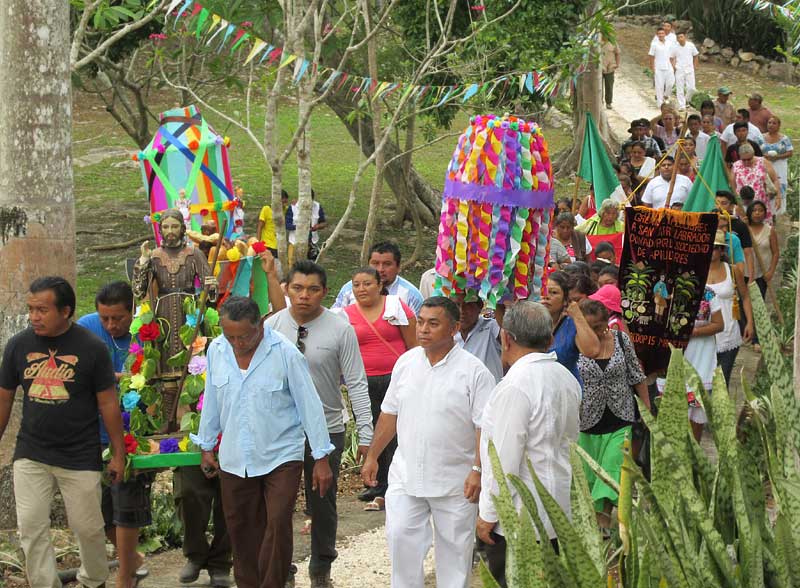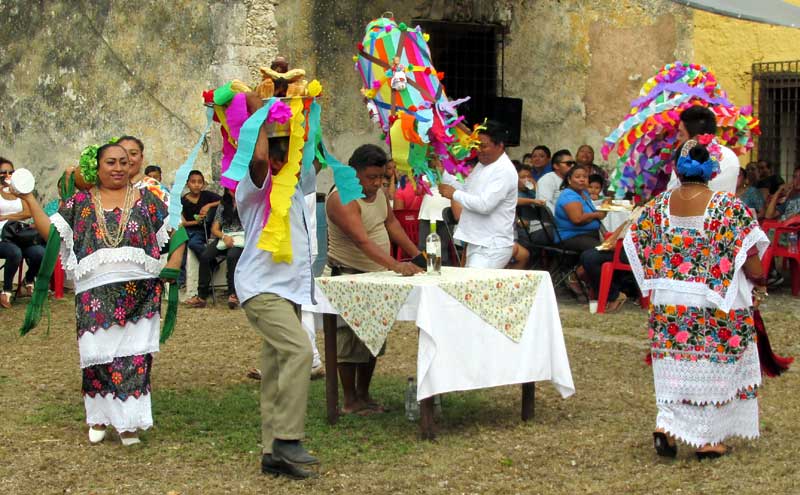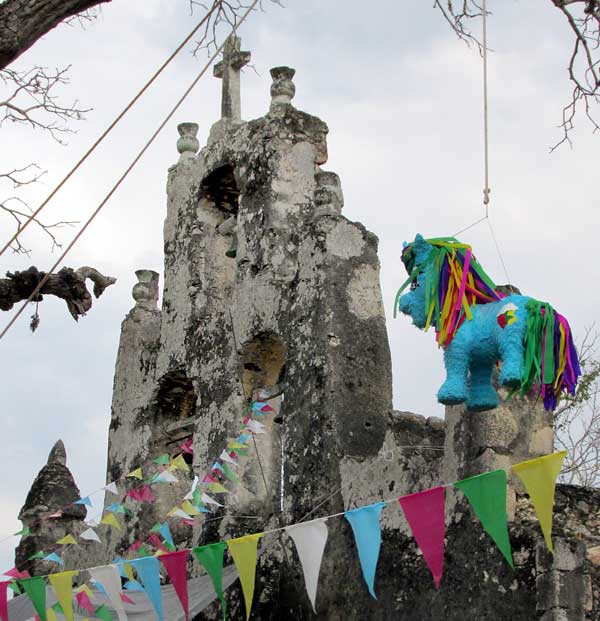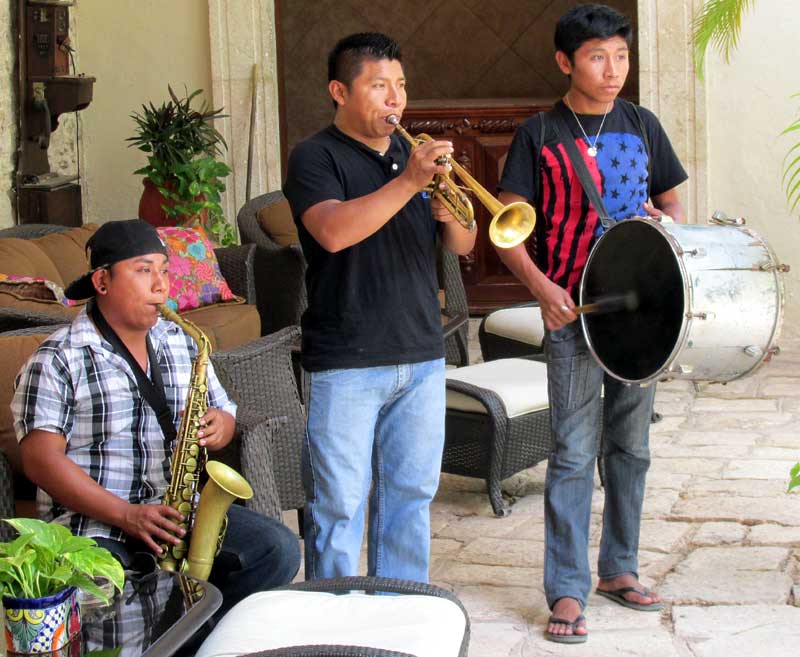
An Excerpt from Jim Conrad's
NATURALIST NEWSLETTER
May 22,
2016
Issued from Hacienda Chichen Resort adjoining Chichén Itzá Ruin, Yucatán, Mexico
The Hacienda's pretty little church, built in the early 1500s, is dedicated to San Isidro, the patron saint of workers. Last Sunday was San Isidro day. The owner invited the community to come for an afternoon mass followed by the eating of a pit-roasted pig, and some Maya ceremonies, all accompanied by exploding rockets and a small band of local musicians playing traditional tunes learned from their fathers.
But, before I talk about that and show some pictures, I want to share this opinion: That life's most vivid moments usually don't take place in isolation, but rather take meaning from outside influences, and/or internal goings-on. In fact, it seems that for me last Sunday there was the event, there was an essay, and there was quantum mechanics.
The essay, from the New York Times and sent by Eric in New York, was Jon Mooallemmay's "The Amateur Cloud Society That (Sort Of) Rattled the Scientific Community." The writer describes attending a meeting of the Society, which mostly was a flop, but while sitting there letting his mind wander about the lives of those other people sitting around him, all living beneath the same sky, and how this occasioned an inexplicable rush of empathy for them. "What I felt, really, was awe: the awe that comes when you fully internalize that every stranger's interior life is just as complicated as yours." On St. Isidro Day I was in a cloud-appreciation mood.
Eric also had sent an article from Quanta Magazine, an interview with cognitive scientist Donald Hoffman, on the nature of reality, as suggested by quantum mechanics. After several amazing twists and turns, the interview ends with Hoffman discounting all features of what we think of as reality, except one. And that one thing is the experiences of everyday life. What we feel and think right now make up the ultimate nature of reality. "I am postulating conscious experiences as ontological primitives, the most basic ingredients of the world," as he put it. Ontology is the philosophical study of the nature of being, becoming, existence, or reality, as well as the basic categories of being and their relations. I think that what Hoffman was saying was that everything is illusion, except what's experienced right now.
And so, with these thoughts on my mind, St. Isidro Day came along, as gently and lovely as a cloud, as elegant and unyielding as a quantum formula.
In early afternoon with considerable heat and humidity, as the crowd began gathering, local musicians mounted onto the Hacienda's veranda and began playing simple march-type tunes typical of traditional Maya events, shown below:

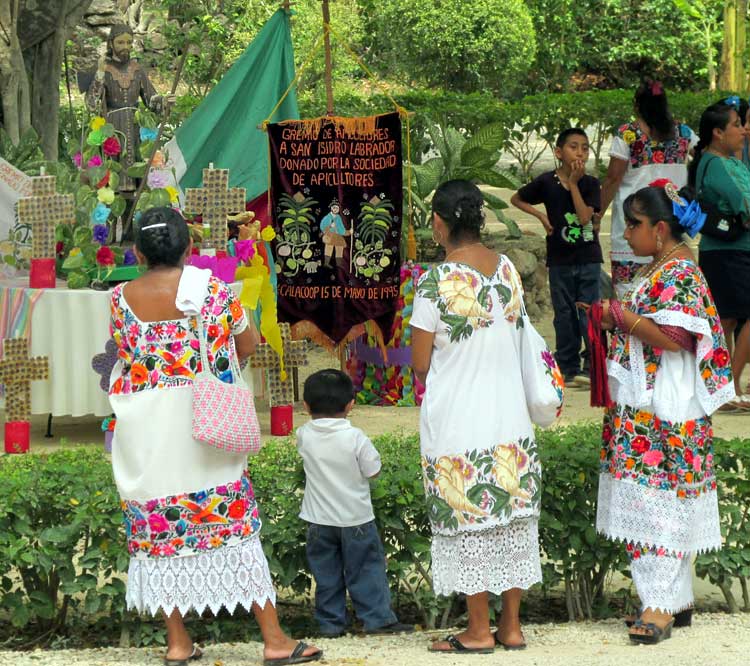
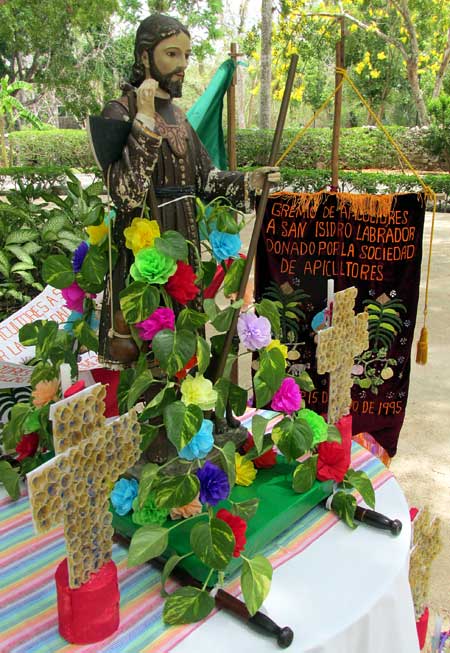
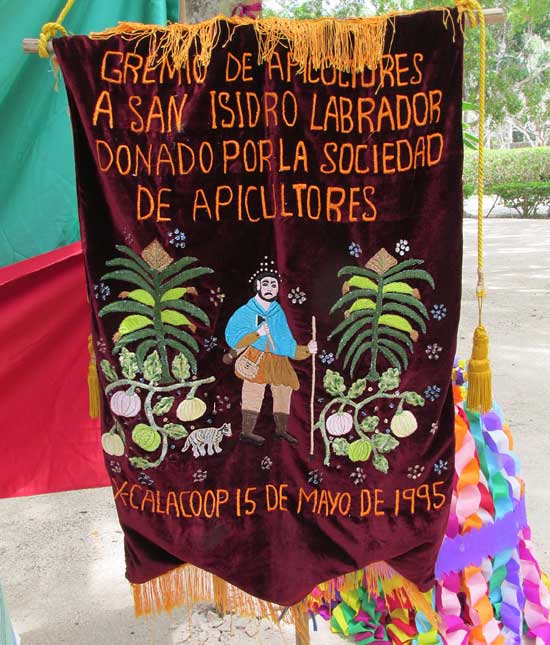
Somehow the crowd got organized, and the statue got lifted up for its yearly ascent to the church on the hill. Below, you can see the parade climbing the hill amid melodies of cornet, saxophone and drum:
